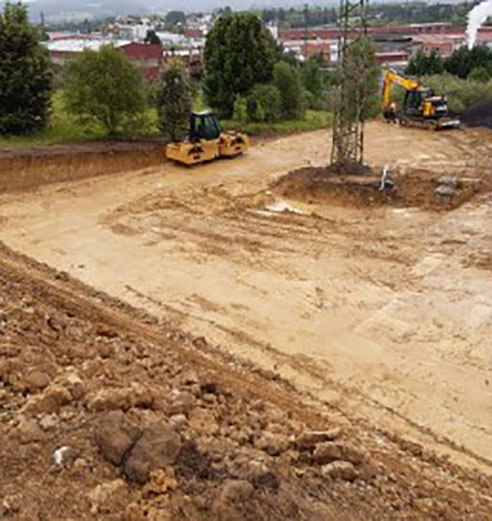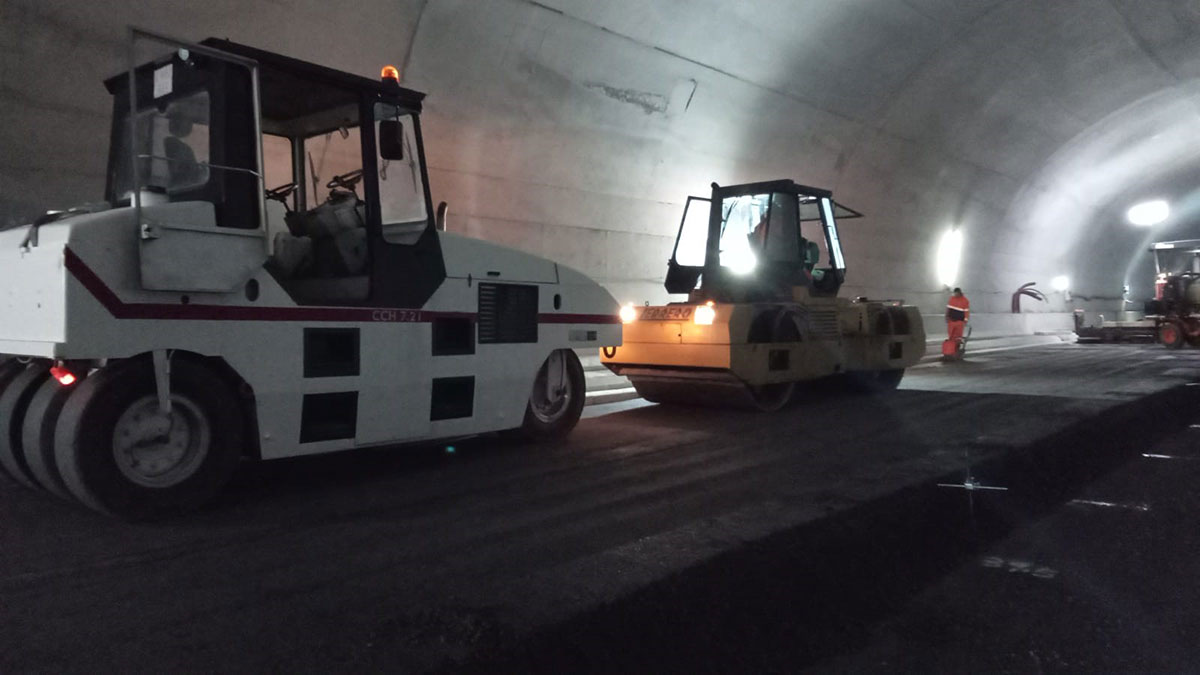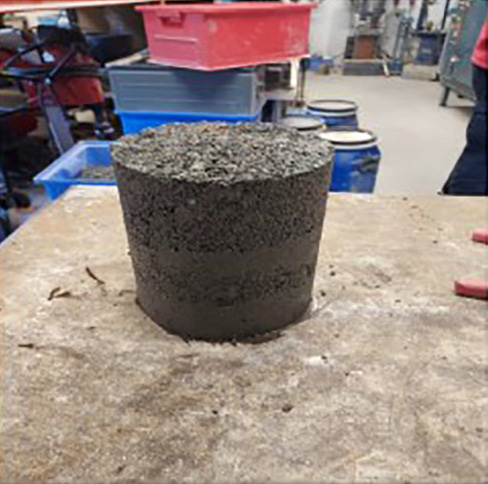GRAFRA
OBTAINING GRAVEL-CEMENT FROM ROAD MILLINGS AND STEEL AGGREGATES
ASFALTADOS OLARRA, like the rest of the companies in the sector, generates a significant volume of road millings. Although there are regulations that allow their reuse, barely 15% are reused, mainly as part of new bituminous mixtures. The remaining 85% is landfilled. This is a generalised problem of surface maintenance companies, which can be extrapolated perfectly on a national scale, due to the fact that sufficient controls have not been carried out , although the feasibility of use has been demonstrated, or they have not been carried out in such a way to enable the material to be compared with the natural material.
Within the general situation of civil engineering construction, where there has been an appreciable reduction in margins, public infrastructures and in particular road infrastructures constitute the most of the sector's demand. In addition, the depletion of natural aggregate reserves requires the search for alternatives to increase the availability of aggregates, for which multiple projects and studies are being undertaken to replace natural aggregates with recycled aggregates from different sectors.
ASFALTADOS OLARRA, a company specialising in the asphalting sector, has led GRAFRA, in which it has worked with the TECNALIA Technology Centre.

DRIVING FACTOR



 OBJECTIVES
OBJECTIVES
- Obtain an effective recovery option for road surface materials that minimises the quantities of road milling and steel waste that end up in landfill.
- Demonstrate the proper functional and environmental performance of the material for the foreseen applications from a work methodology to be implemented based on an iterative process of evaluation, analysis and improvement throughout the different phases of the project.
- Develop new gravel-cement products from waste from the iron and steel sector and from surface renovation.
- Industrialise the process of a new, more sustainable soil-cement solution.
- Reduce costs for infrastructure developers due to the lower price of recycled aggregates, as well as for companies by avoiding the landfilling of significant quantities of waste.
 RESULTS
RESULTS
- Physical-mechanical and chemical characterisation of the waste analysed with no notable incidents with respect to the characterisation of a natural aggregate.
- Experimental gravel-cement test specimens with simple compressive strength is perfectly comparable with mixtures made out of standard components.
- Full-scale pilot carried out and installed without any notable incidents and its evolution is still under study.
- GRAFRA Technical Specification Document for the recovery as a filler aggregate for gravel-cement layers.
- Submission of the consultation form to EOTA, the European Organisation for Technical Assessment of Construction Products for construction products set up under the Construction Products Regulation.
- Saving of 6.8 kg of CO2 equivalent emissions per tonne of gravel-cement by replacing natural aggregates from quarries with steel and road milled aggregates.
 CONCLUSIONS
CONCLUSIONS
- The evolution of the full-scale gravel-cement layer pilot project, implemented at the ASFALTADOS OLARRA facilities, leads to the conclusion that the waste used and recovered is initially suitable in the percentages proposed for use in gravel-cement layers for structural road surfaces.
- ASFALTADOS OLARRA has established contacts with agents interested in the solutions proposed in GRAFRA to ensure the supply of steel aggregate in the future. Likewise, prior contacts have been made with IHOBE and Bizkaia Provincial Council to inform them of the project's approach and assess its viability. It is also planned to involve prescribers and relevant players in the sector, including municipalities and the Surfaces Table.
- The higher density of slag in relation to the density of natural aggregate leads to an increase in the cost of transport, stockpiling and installation processes. On the other hand, the non-homogeneity of the milling waste required unforeseen conditioning, and the plant had to be adapted.
ENVIRONMENTAL
TECHNICAL
ECONOMIC
COMMERCIAL
ON THE MARKET




